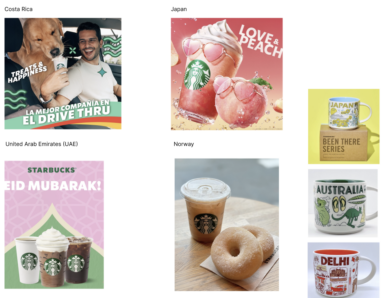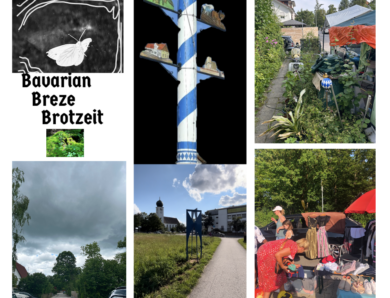
Week 5
With last week’s lecture in mind, I started thinking about brief 2. I realized I had to reflect upon my values again. I came up with four main ones: sustainability, concern for animals, justice, and authenticity.
Brief 2 Research:
Two things I have to clarify for myself. What are design skills and what is a process model? A quick search about process models revealed in the work environment it is a “visual depiction of the flow of work and tasks for specific goals”.1
“It is now established wisdom in the engineering design community that models are useful means of understanding and interacting with both products and processes.”2 The design process is iterative and research is an important part of it.
What are design skills and a designer’s identity? Kunrath, Cash, und Kleinsmann3 illustrate a DPI framework (Designers professional identity) which includes PA (= Personal identity) and DS (= Design skills).

Not only the design process is iterative, but also the designer himself has to reflect upon the feedback he receives and, as a result, might mature or change his perspective and practice. The reflexive process was also a part of last week’s topic of the “Trajectory of the self”.
Leaning on to the DPI framework I created a list of design skills that I feel I am most proficient with and skills I hope to improve on. Although I am not going to differentiate between Personal identity and Design skills for simplicity and because of the overlapping nature of these concepts.
Design skills I feel proficient in |
Creativity “capability to generate ideas[…]mature” but also collab with others4 Emotions/empathy Motivation Openness Social Abilities Problem-solving (something I added, but I assume it could be a part of cognitive abilities) UX (I wouldn’t say I am an expert, but I feel I can find my way around) |
Design skills I hope to improve upon |
Education-based knowledge (language competency, basic design knowledge, knowledge of practice) Practice of Design Design thinking (maybe part of practice-based knowledge) |
Research material: Thoughts on ideas, defining methods of thinking, curiosity & insight (lecture by Susanna Edwards)
Since the beginning of the design discipline it has been difficult to normalize the design process.
Efforts have been made to make sense of growing complexity and enable best practices. In the past the design methods have been linear. But in the last 40 years attempts have been made to create a less linear and iterative process idea. This was also influenced by the growing complexity due to factors such as technology and sustainability. In addition, the design process today is less scientific and needs to be adapted quickly to meet changing business requirements.
Double Diamond – Design Process model
I was already familiar with this model from the UX design process. It is very common and simple enough to be used by different design disciplines. I believe there is an extended version of it that also shows the iterative aspect and that research is possible at any point in the design process.
Edward De Bono’s six thinking hats
The six thinking hats technique encourages a group of people to look at the same question(s) from different angles by putting on different hats. It reminded me of Harry Potter and the hat that determines the house for the students. Ultimately, this technique is about being open to other perspectives and approaches to a problem.

The Divided brain by Ian Mc Gilchrist (RSA animate)
What role does empathy play in Graphic Design? I believe a big one as we need to be able to understand the customers and users of a product. How can we evoke an important message towards the users if we are not able to reflect ourselves and others?
The short animated video questions our way of wanting to seperate the brain into two parts, the right brain (emotional, intuitive) and the left (logical). But it suggests they both offer two different version of the world that are combined in different variations all the time. After the 16th century there has been a shift toward the left part, almost neglecting the right. And as Ian Mc Gilchrist quotes Einstein “the intuitive mind is a sacred gift and the rational mind is a faithful servant”.
Research task: Visit the library catalogue and start drawing up a reading list of design-related texts
My list (work in progress):
- The Routledge companion to design research (Rodgers, Paul; Yee, Joyce: 2015)
- “comprehensive examination of design research, celebrating the plurality of [it]”
- “from contributors around the world”
- I like the global contribution to this book and the comprehensive view
- Design and creativity: policy management and practice (Julier, Guy; Moor, Liz; 2009)
- “Does the management of design conflict with traditional ideas of creative freedom and autonomy?”
- Some interesting questions seem to be answered in this piece of literature
- Visual Research: An introduction to Research Methods in Graphic Design (Russel Bestley; Paul McNeil; 2022)
- very well structured book, which contains key points.
- “No amount of ingenuity or creativity can crate strong, clear, memorable design [..] from thought which is confused. [..] design is first and foremost a means of organizing ideas”.
- https://www.indeed.com/career-advice/career-development/process-model). ↩︎
- What is a process model? Reflections on the epistemology of design process models, Martin Stacey, 2010 ↩︎
- Designers’ professional identity: personal attributes and design skills, Kunrath, Kamila; Cash, Philip; Kleinsmann, Maaike (2020) ↩︎
- Designers’ professional identity: personal attributes and design skills, Kunrath, Kamila; Cash, Philip; Kleinsmann, Maaike (2020) ↩︎





No Comment